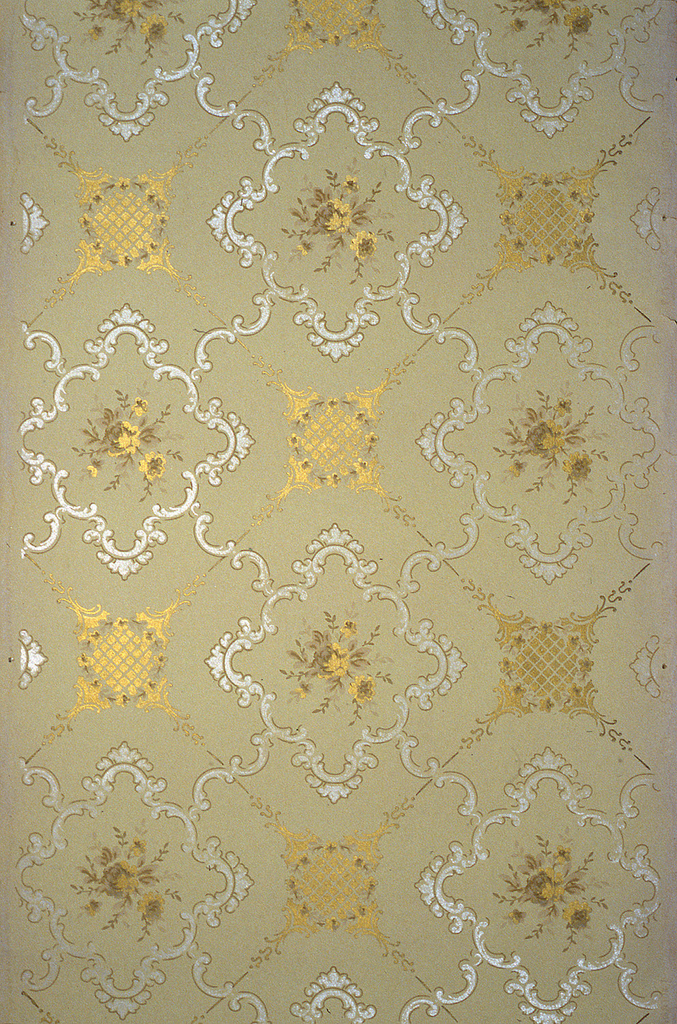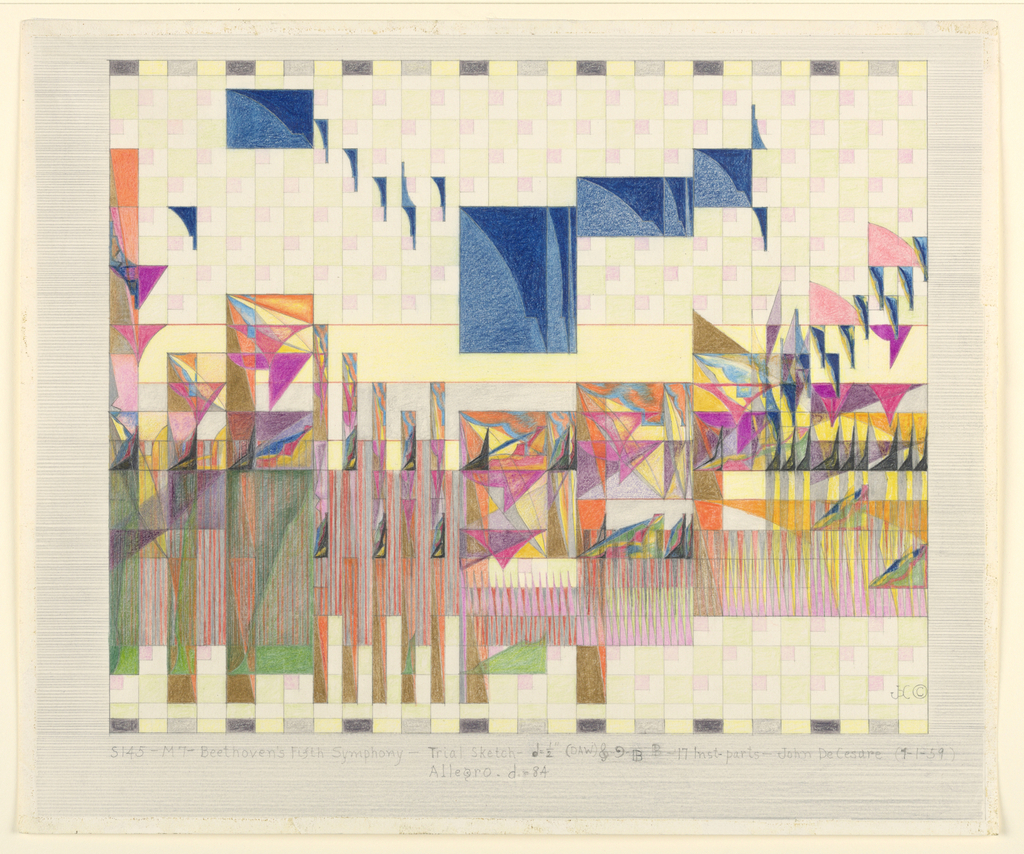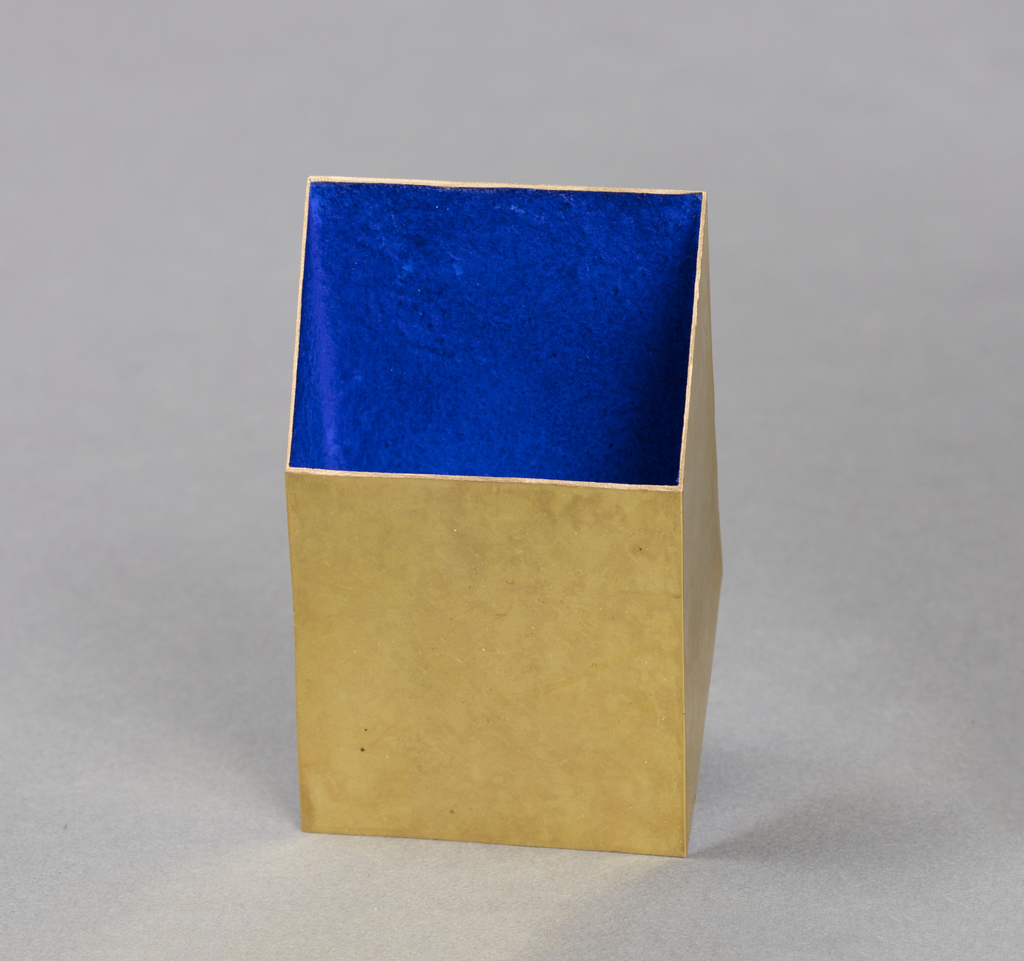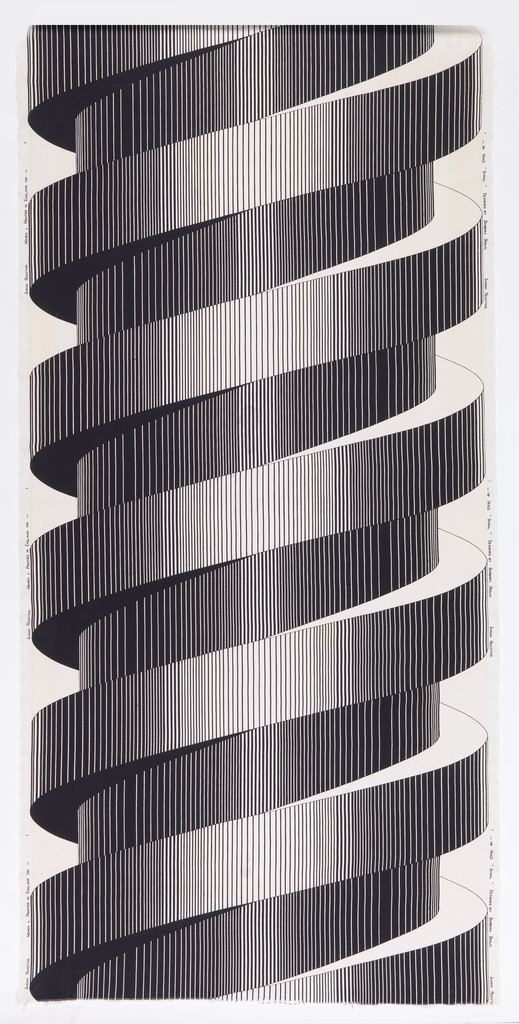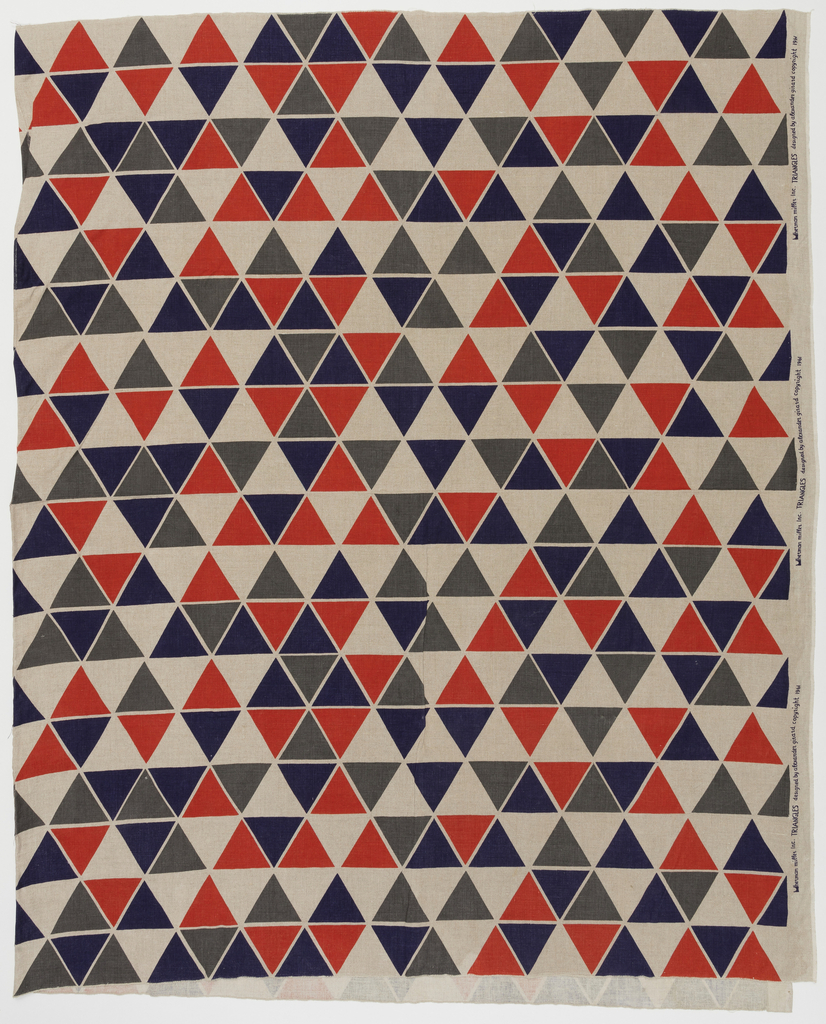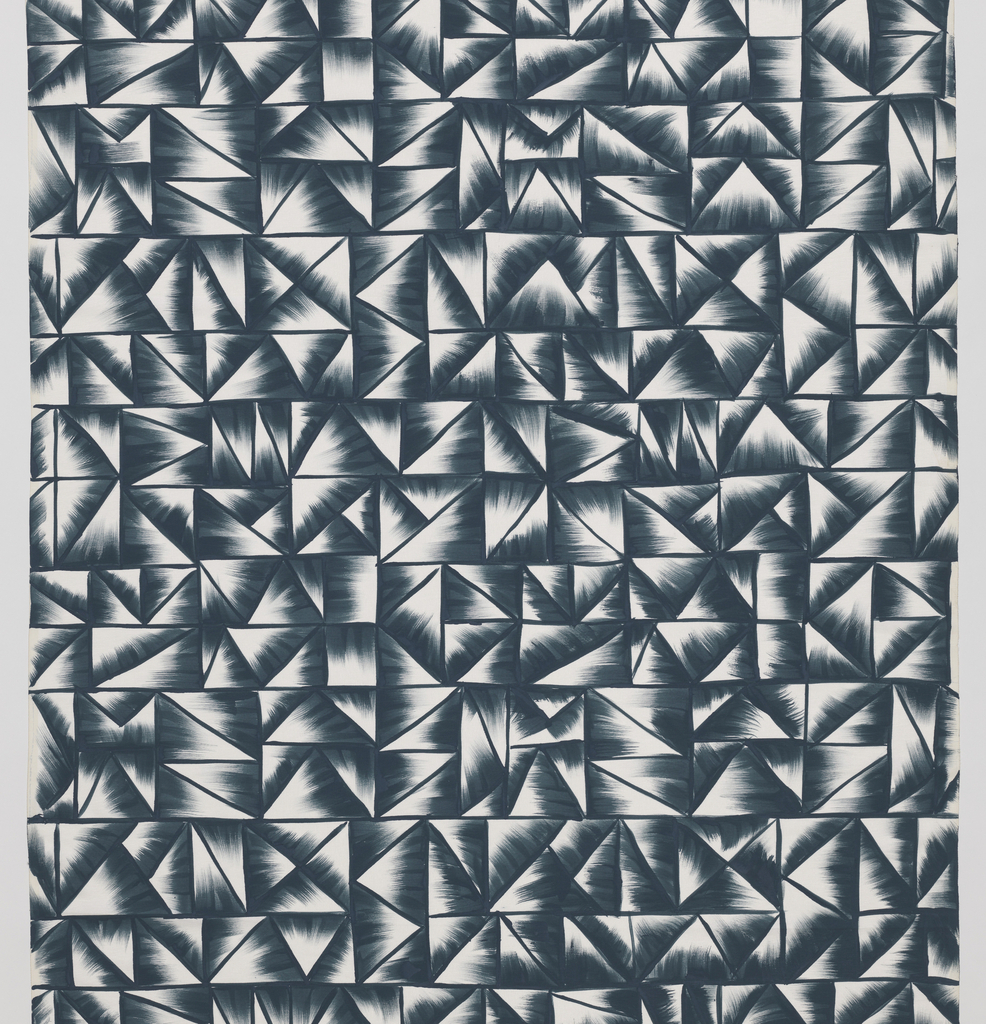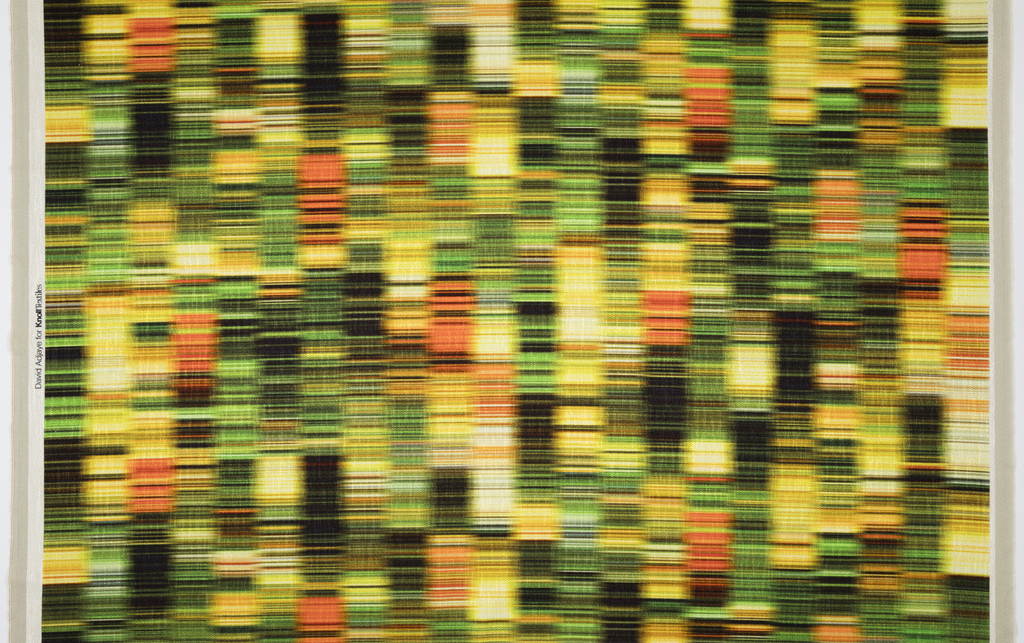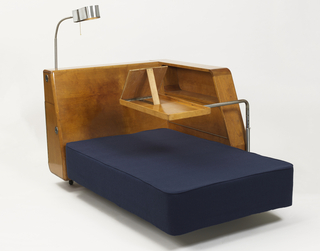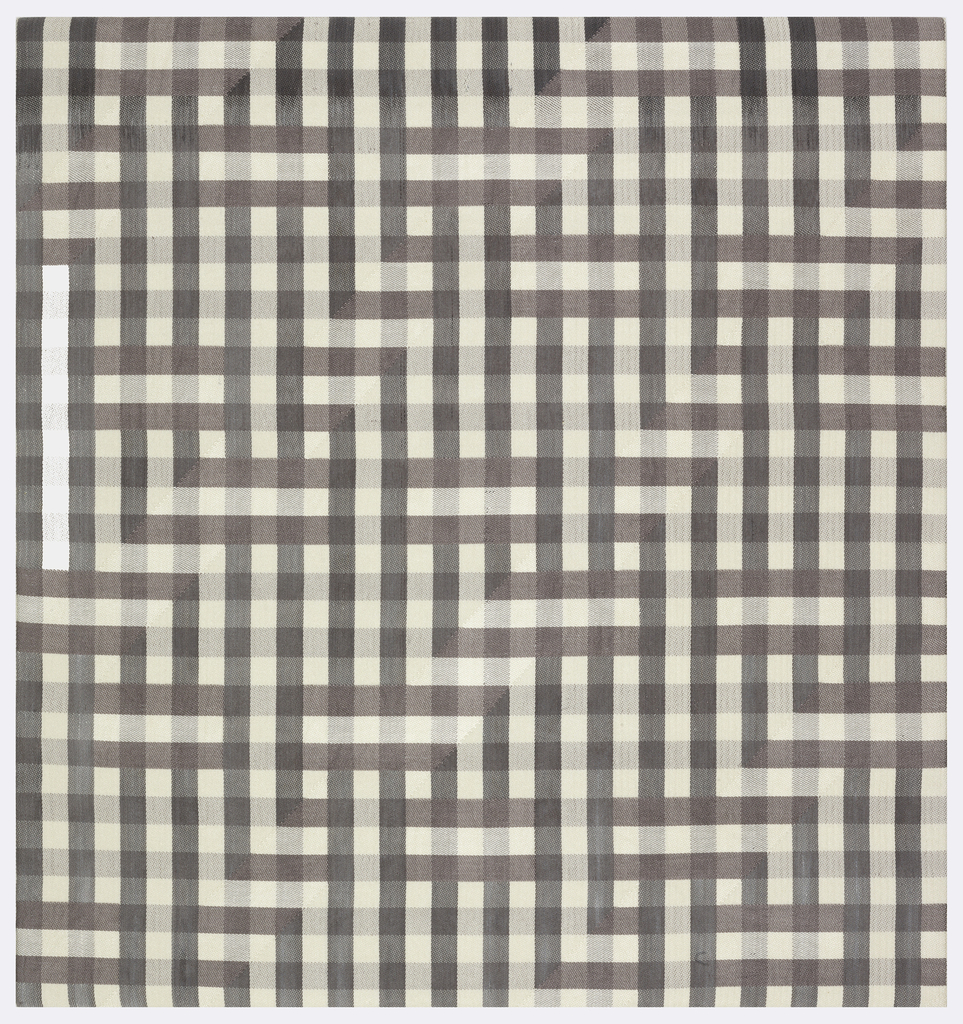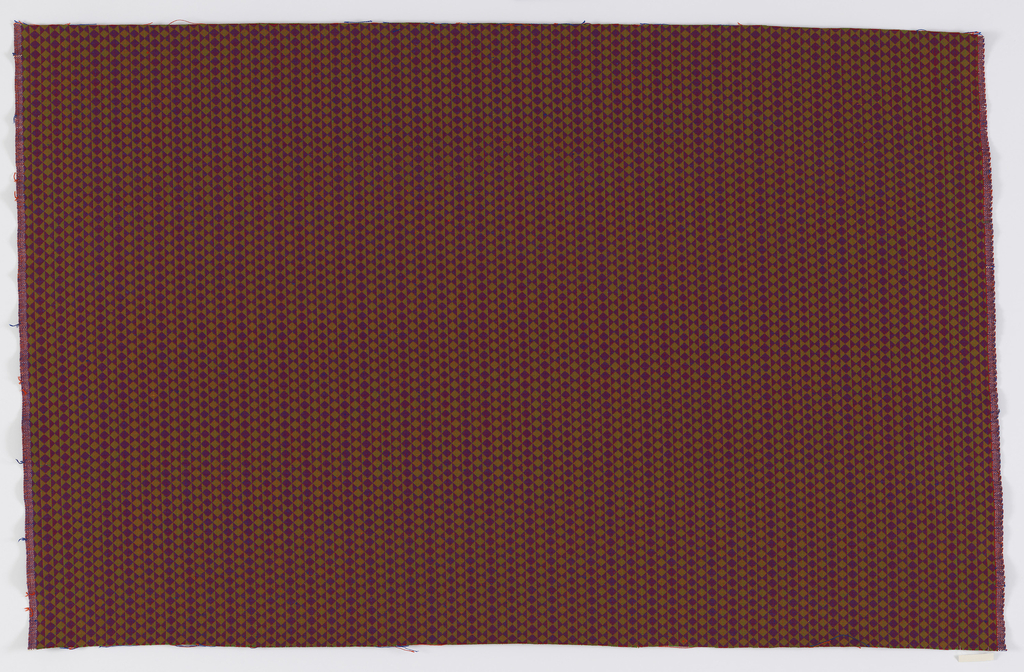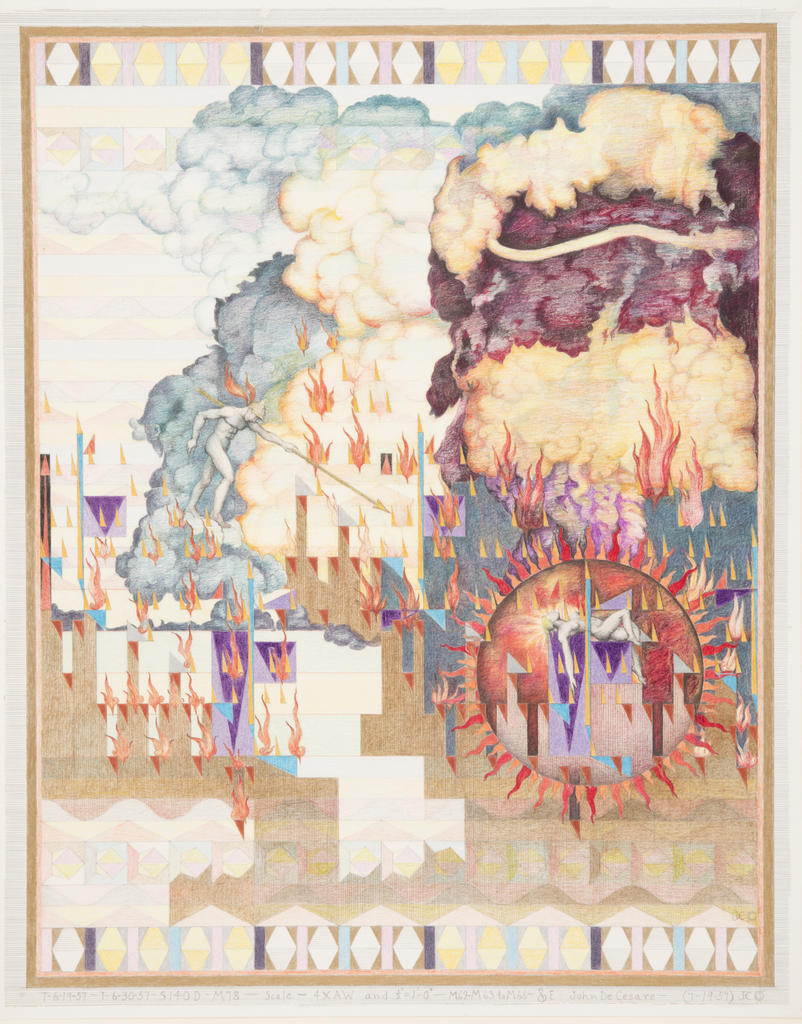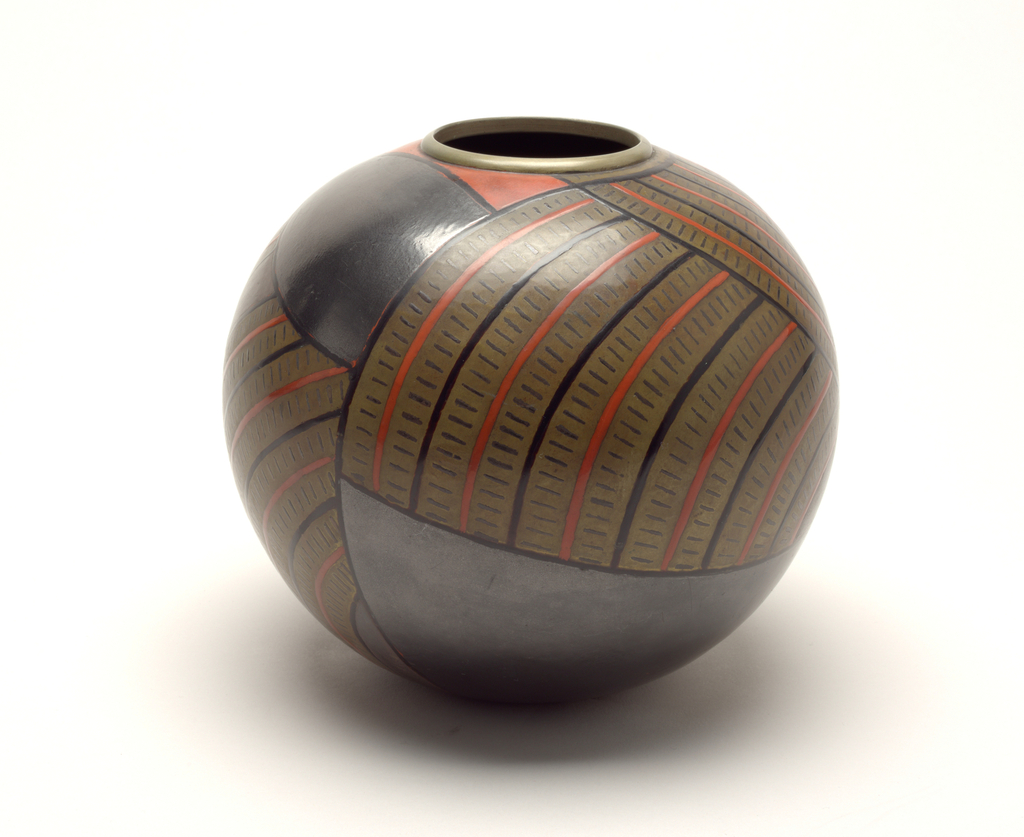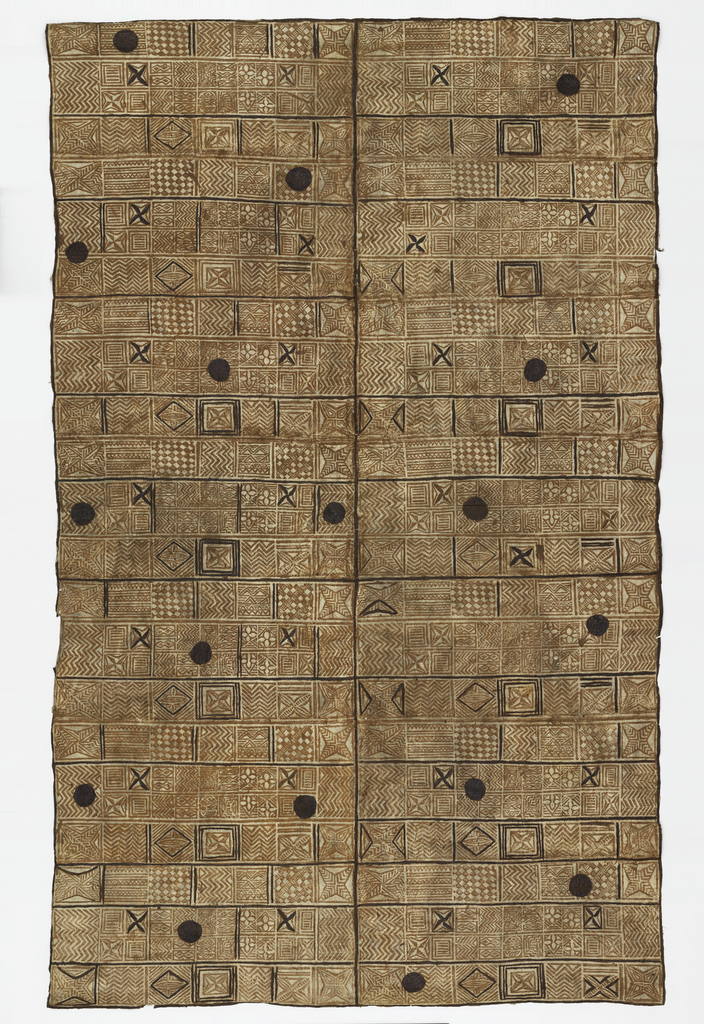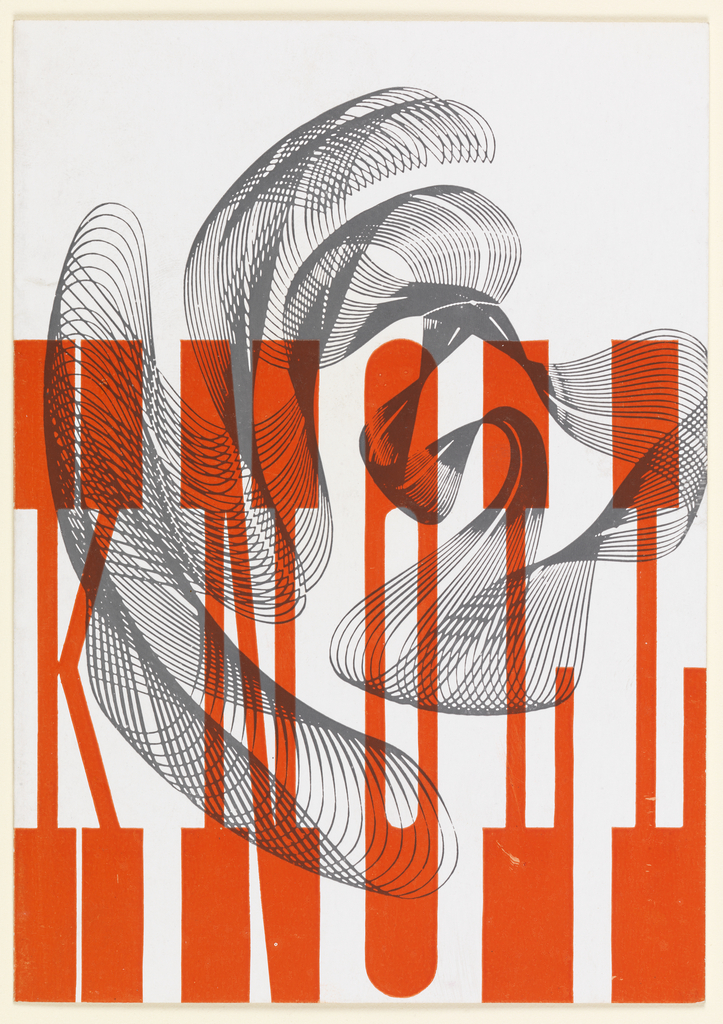As the holidays draw near and decorations go up we begin to see the traditional hues of red and green, and their counterparts, silver and gold, appear around every corner. In accordance with this timing, it is appropriate to examine wallpapers that really exemplify this vein. Ceiling papers during the late nineteenth and early twentieth...
Many people try to play sheet music on the piano, but what about trying to play a drawing on the piano? The idea seems bizarre at first, but it’s central to a movement that began in the 1950s, where composers created “graphic scores” instead of typical sheet music. These graphic musical scores attempt to represent...
Folded into an open rhombus, and richly adorned with pigment, this brooch boldly uses color (achieved with the application of cobalt blue pigment) and texture (achieved by stippling the gold) to enhance its form. One look at this brooch by Giampaolo Babetto provides evidence of the mastery of gold present in his work. Babetto’s pieces cleverly...
In the 1960s, Heal Fabrics was London’s most avant-garde textile producer, and Barbara Brown was its most prominent designer. Trained at the Canterbury College of Art and the Royal College of Art, she began designing for Heal in 1958 and continued into the early 1970s. Brown’s distinctive style pioneered the fashion for bold geometric patterns...
Alexander Girard (American, 1907–1993) was one of the leading American textile designers of the mid-century period, and was a strong proponent of bringing an affordable modernism to the middle class. Girard was the head of the Textile Division of Herman Miller Inc. from 1952 to 1973, where he worked alongside Charles and Ray Eames and...
Fresco is a hand-drawn and -painted textile created by a team of Indian calligraphers. Formerly employed to paint cinema billboards, these painters now produce craft fabrics. The uniqueness of each textile is only discernible under close scrutiny, when one notices slight variations of lines and the occasional stray ink marks. This overall consistency of application...
Author: Diedrick Brackens September is New York Textile Month! In celebration, members of the Textile Society of America will author Object of the Day for the month. A non-profit professional organization of scholars, educators, and artists in the field of textiles, TSA provides an international forum for the exchange and dissemination of information about textiles...
This stylishly and supremely practical day bed reflects a collaboration between Frederick Kiesler and Marguerita Mergentime. It was created for Mergentime’s NYC apartment in the mid-1930s, and is Kiesler’s only known residential commission. Containing three storage compartments, a bookshelf, a swing-out bed tray for reading or eating, and an attached lamp, the bed is really...
Ethel Stein (American, b. 1917) is a Westchester-based artist weaver. Trained as a woodworker, painter and sculptor, Stein became interested in textiles in the 1970s. She began her investigation of the techniques of weaving by studying historic textiles in the collections of the Metropolitan Museum of Art and Cooper Hewitt. Working closely with former curator...
Millmosaic was introduced in 1960, while Alexander Girard was head of the Textile Division at Herman Miller.[1] His work derived from a wide range of sources such as ancient and folk art, however the design for Millmosaic was most likely inspired by his interest in contemporary art, or more specifically, Op Art. The geometry of...
Though this striking drawing may at first seem to present a colorful abstract fantasy, the design meticulously translates 78 measures of the 1870 music drama Die Walküre into a new complex visual form. Before creating this ornamental design, John De Cesare worked very successfully as an architectural sculptor. He provided sculptural decoration for some of...
Cynthia Trope discusses the intricate metalwork and lacquer work in this Jean Dunand vase.
Alexander Hayden Girard made an indelible (and colorful!) impact on 20th century modernist textile design. At the helm of Herman Miller’s textiles division, his playfulness provided a warm complement to the stark simplicity of furniture designs of Charles and Ray Eames and George Nelson. As its title suggests, Ribbons features overlapping, irregular vertical rectangles reminiscent...
The ancient craft of creating bark cloth is shared by numerous cultures around the world. In Samoa, this textile tradition has been passed down for generations and is an integral component of gift exchange. The textile we see here is a prime example of a siapo tasina, a type of bark cloth (siapo) that has...
The architect and designer Florence Knoll described the work of the seminal, Swiss graphic designer Herbert Matter, “Everything was clear cut with imagination and even in some cases artistic whimsy…”[1] Their introduction sparked a creative partnership at Knoll in 1946 and Matter lent his diverse and exceptional talents to numerous artistic projects, including the company’s...
